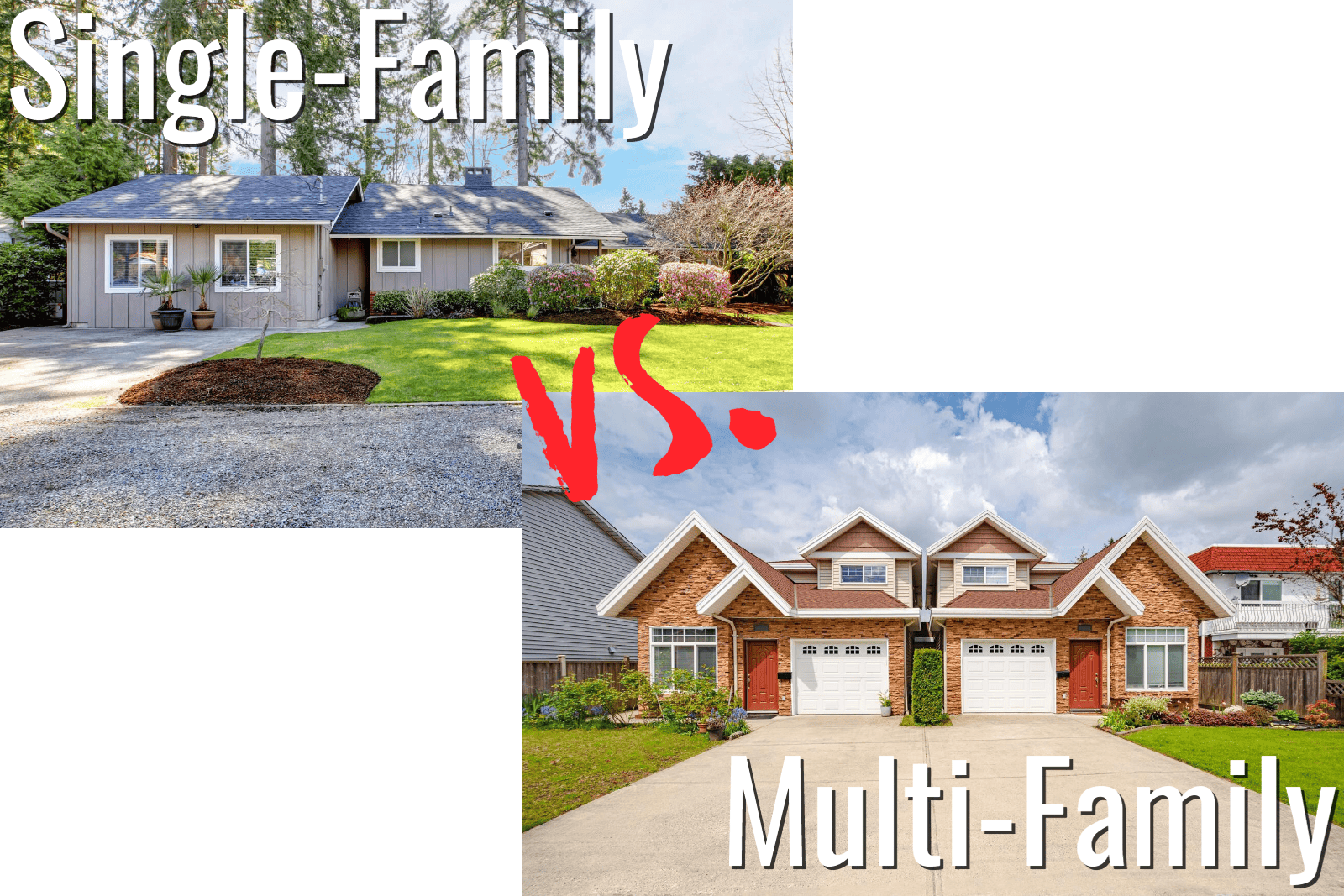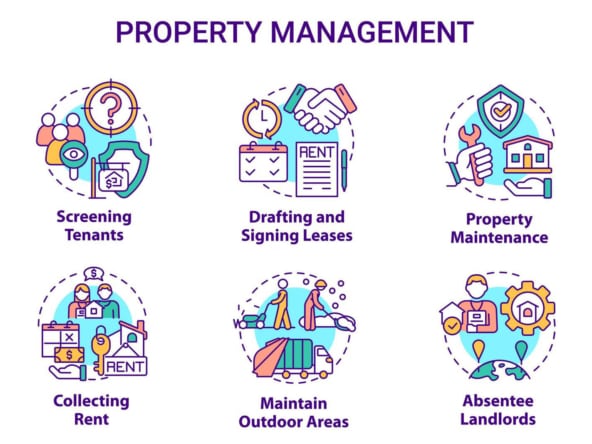So you’ve decided you want to invest in real estate. Fantastic!
Now you’ll need to decide what kind of property to invest in. You have choices. Let’s look at the two property types most small investors start with: single-family homes and multi-family properties.
These two property types each offer distinct advantages and disadvantages that cater to different investment goals and risk appetites. In this article, we will delve into the pros and cons of each to help you determine which path aligns best with your investment strategy.
Single-Family Homes: Advantages and Disadvantages

The single-family home category includes stand-alone homes, but could also include a single condominium unit that may or may not be attached.
Advantages:
- Easier Entry: Investing in single-family homes typically requires a lower upfront investment compared to multi-family properties, making it an accessible option for novice investors or those with limited capital.
- Larger Pool of Buyers/Renters: Single-family homes often attract a larger pool of potential buyers or renters, as they cater to individuals, couples, and smaller families. This can lead to reduced vacancy rates and potentially quicker turnover if you are planning to flip the house rather than hold and rent.
- Appreciation Potential: Single-family homes tend to appreciate in value over time, especially in desirable neighborhoods. This can result in capital gains and the potential for long-term wealth accumulation.
Disadvantages:
- Higher Vacancy Risk: In a single-family property, if a tenant leaves, the entire rental income is lost until a new tenant is secured. This contrasts with multi-family properties, where vacancies in one unit can be offset by income from other units.
- Limited Cash Flow: While single-family homes can appreciate, their rental income might not match that of multi-family properties. This can limit short-term cash flow potential, which is important for investors seeking steady income streams.
- Scalability Challenges: Scaling a portfolio of single-family homes can be complex and time-consuming. Managing multiple properties spread across different locations can be demanding in terms of maintenance, management, and logistics.
Multi-Family Properties: Advantages and Disadvantages

Multi-family properties, for this article, include duplex, triplex and quadruplex properties. Apartment complexes with more than 4 units are a different category of investment.
Advantages:
- Economies of Scale: Multi-family properties offer the advantage of economies of scale. Maintenance, management, and repairs can be more cost-effective when spread across multiple units.
- Diversified Income: With multiple units, the risk of total income loss due to vacancies is mitigated. Even if some units are vacant, others can still generate rental income.
- Stronger Cash Flow: Multi-family properties generally provide higher rental income compared to single-family homes. This can lead to more consistent and substantial cash flow for investors.
Disadvantages:
- Higher Initial Investment: Acquiring multi-family properties often requires a larger upfront investment, which might be a barrier for entry for some investors.
- Complex Management: Dealing with multiple units and tenants can be more complex and demanding than managing a single-family property. Effective property management is crucial to success.
- Market Sensitivity: Multi-family properties are more closely tied to market conditions and economic trends. Economic downturns can impact vacancy rates and rental prices more significantly.
Which Path is Right for You?
The decision between single-family and multi-family real estate investing hinges on your investment objectives, risk tolerance, available resources and availability of properties. Some cities do not have large numbers of multi-family properties, but have plenty of single-family homes. And vice versa. Get to know your area and what is available.
Choose single-family homes if you’re:
- Looking for a lower entry point into real estate investment.
- Interested in capitalizing on potential appreciation in desirable locations.
- Willing to accept potential higher vacancy risks for potentially higher appreciation.
Opt for multi-family properties if you’re:
- Seeking stronger and more consistent rental income.
- Comfortable with managing more complex operations and tenant dynamics.
- Prepared to invest a larger upfront amount for better economies of scale.
In reality, the “better” option depends on your individual circumstances and financial goals. Many successful investors diversify their portfolios to include both single-family and multi-family properties, leveraging the benefits of each to create a well-rounded investment strategy.
The single-family vs. multi-family real estate investment debate is not about one being inherently superior to the other, but rather about aligning your choice with your investment objectives and risk tolerance. Thorough research, a clear investment strategy, and diligent property management will be your allies regardless of the path you choose.
Kurzner Group specializes in helping real estate investors. If you are looking for your first or your next investment property, connect with us for a free evaluation of your investing plans. We’ll get to know your investment criteria and help you find properties that fit your buy-box. Working with investors is what we do. Even if you’ve never bought a house, we can help. Complete the form below to get started.



